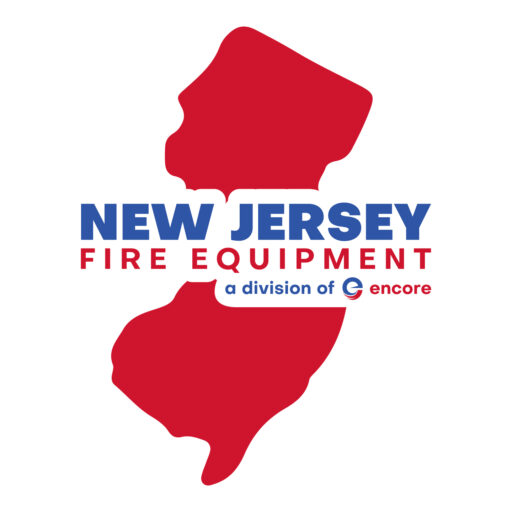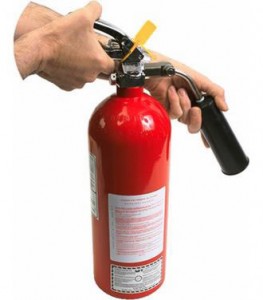Agent displaces oxygen (CO2 or inert gases), removes heat from the combustion zone (Halotron, FE-36) or inhibits chemical chain reaction (Halons). They are labelled clean agents because they do not leave any residue after discharge which is ideal for sensitive electronics and documents.
- Halon (including Halon 1211 and Halon 1301), a gaseous agent that inhibits the chemical reaction of the fire. Classes B:C for lower weight fire extinguishers (2.3 kg ; under 9 lbs) and A:B:C for heavier weights (4.1-7.7 kg ; 9-17 lbs). Banned from new production, except for military use, as of January 1, 1994 as its properties contribute to ozone depletion and long atmospheric lifetime, usually 400 years. Halon was completely banned in Europe resulting in stockpiles being sent to the United States for reuse. Although production has been banned, the reuse is still permitted. Halon 1301 and 1211 are being replaced with new halocarbon agents which have no ozone depletion properties and low atmospheric lifetimes, but are less effective. Currently Halotron I, Halotron II, FE-36 Cleanguard and FM-200 are meant to be replacements with significantly reduced ozone depletion potential.
- CO2, a clean gaseous agent which displaces oxygen. Highest rating for 7.7 kg (20 pound) portable CO2 extinguishers is 10B:C. Not intended for Class A fires, as the high-pressure cloud of gas can scatter burning materials. CO2 is not suitable for use on fires containing their own oxygen source, metals or cooking media. Although it can be rather successful on a person on fire, its use should be avoided where possible as it can cause frostbite and is dangerous to use as it may displace the oxygen needed for breathing, causing suffocation.
- Mixtures of inert gases, including Inergen and Argonite

